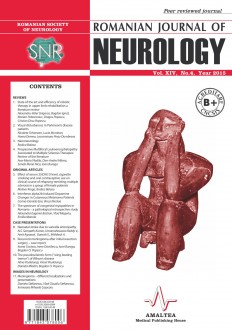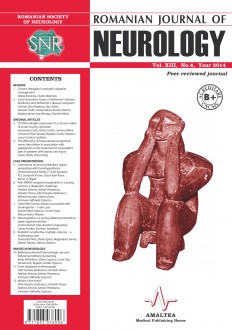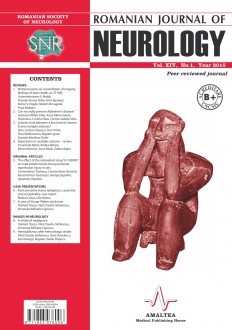SELECT ISSUE

Indexed

| |

|
|
|
| |
|
|
|

|
|
|
|
|
|
| |
|
|
HIGHLIGHTS
National Awards “Science and Research”
NEW! RJN has announced the annually National Award for "Science and Research" for the best scientific articles published throughout the year in the official journal.
Read the Recommendations for the Conduct, Reporting, Editing, and Publication of Scholarly work in Medical Journals.
The published medical research literature is a global public good. Medical journal editors have a social responsibility to promote global health by publishing, whenever possible, research that furthers health worldwide.
MENINGIOMA – DIFFERENT LOCALIZATIONS AND PRESENTATIONS
Daniela Stefanescu, Vlad Claudiu Stefanescu and Inimioara Mihaela Cojocaru
ABSTRACT
Meningioma is a benign tumor of the meninges, which occur at sites of dural folds, most commonly the fronto-parietal parasagittal convexities, but also at the cerebello-pontine angle and on the sphenoid wing and the tuberculum sellae. They are highly vascularized, and are hypo/iso-intense on MRI and show enhancement. Clinical expression varies from asymptomatic to seizures and focal neurologic deficits. Treatment is surgical.
Full text | PDF


